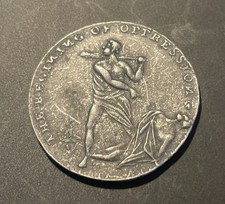For many investors, the ultimate goal is to create a portfolio that grows over time while minimizing risk. To achieve this, some venture beyond traditional stocks and bonds into the world of collectibles, with rare coins rising as an intriguing option. With their unique characteristics and historical significance, rare coins offer an opportunity for portfolio diversification, potential long-term gains, and a hedge against the volatility often found in other markets.
For many investors, the ultimate goal is to create a portfolio that grows over time while minimizing risk. To achieve this, some venture beyond traditional stocks and bonds into the world of collectibles, with rare coins rising as an intriguing option. With their unique characteristics and historical significance, rare coins offer an opportunity for portfolio diversification, potential long-term gains, and a hedge against the volatility often found in other markets.
The Allure of Rare Coins
Rare coins have an appeal that extends beyond their financial value; they possess historical, artistic, and educational worth. Collectors value them for their beauty, their connection to specific historical eras, and the craftsmanship that went into creating them. This multidimensional appeal contributes to their enduring value and the consistent demand that helps drive their investment potential.
Rarity and Value: A Direct Correlation
The rarity of a coin is often the main determinant of its value. A rare coin, by definition, is one that exists in limited quantities. When demand exceeds supply, values tend to rise. Coins with significant historical value, exceptional condition, and appeal to collectors typically command the highest prices and are most sought after.
The Long-Term Perspective
When investing in rare coins, an essential mindset is approaching it as a long-term strategy. Patience is rewarded in this market because values tend to appreciate over extended periods.
For example, elite coins have recorded substantial increases in value historically, experiencing remarkable appreciation over specific timeframes. Notably, select coins have surged in value significantly—showcasing growth that can be quite alluring to the patient investor.
However, it's crucial to remain realistic. Rare coins are not a "get-rich-quick" scheme and should not be treated as such. They represent a unique and specialized avenue that, when approached with diligence and patience, can contribute positively to an investment portfolio's performance.
Stability Amidst The Sea Of Volatility
Rare coins have consistently exhibited lower volatility compared to other investment options. This stability can provide comfort to investors seeking a safe haven or a hedge against the ups and downs of the stock market.
Diversification: A Key Strategy
Diversification is a bedrock principle of sound investing, providing balance against market uncertainties. Just as an investor might spread their investments across various sectors in the stock market, a coin collector might diversify within their holdings of rare coins. This diversification can include a mix of U.S. coins, world coins, and precious metals like gold or silver bullion coins and historical pieces like the venerable double eagle gold coins.
Technology and The Modern Collector
Advancements in technology, particularly the internet, have revolutionized access to information for coin collectors. Online platforms and resources have made valuation, buying, and selling more transparent and accessible. Grading services like the Professional Coin Grading Service (PCGS) and the Numismatic Guaranty Corporation (NGC) have added layers of trust and confidence by providing independent assessments of a coin's condition and authenticity.
These advancements help investors make more informed decisions, but it's also advisable to connect with knowledgeable mentors who can offer insights and guidance. Books, coin shows, online forums, and memberships in organizations like the American Numismatic Association can provide a wealth of educational resources.
The Risks: Counterfeits and the Importance of Authentication
While the potentials are vast, investing in rare coins is not without risks. Counterfeiting and coin doctoring are real concerns. Altered coins can be mistaken for their genuine counterparts, leading to significant financial losses for unsuspecting buyers.
It is imperative only to purchase coins from reputable dealers and insist on coins certified by respected grading services like PCGS or NGC. These organizations verify a coin's authenticity, grade, and provide a level of assurance against the risks of counterfeiting.
Building A Coin Portfolio
When assembling a coin portfolio, it's sensible to start modestly while gaining experience and understanding. The focus should be on quality rather than quantity - a few high-quality pieces can be more valuable than numerous lesser items.
Conclusion: Combining Passion with Prudence
Investing in rare coins represents a fascinating intersection of hobby and financial strategy. It offers the allure of tangible history, the excitement of building a collection, and the potential for significant long-term growth. However, it is essential to approach this market with caution and informed research. Staying abreast of trends, understanding the market, and seeking advice from experts lay the groundwork for successful coin investing.
Rare-coin collecting is not exclusively an alternative to other investments but a compleme
Information for this article was gathered from the following source.




